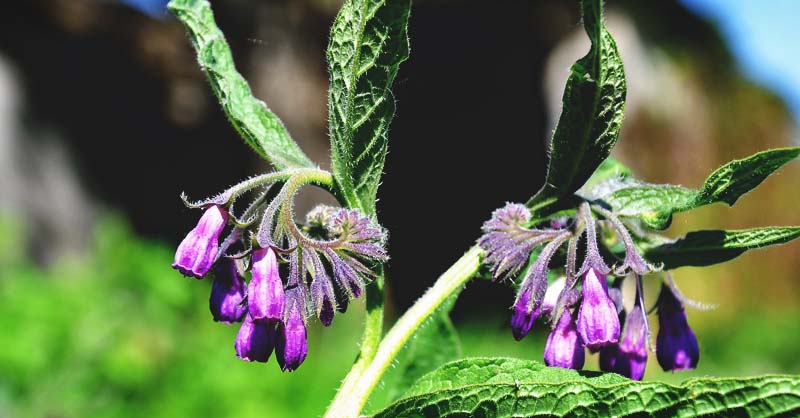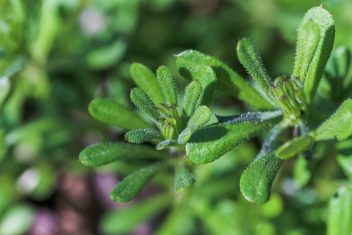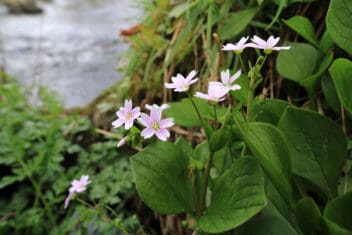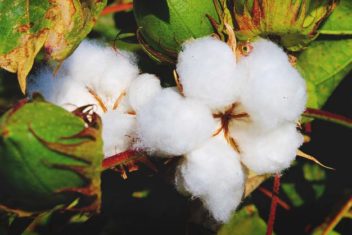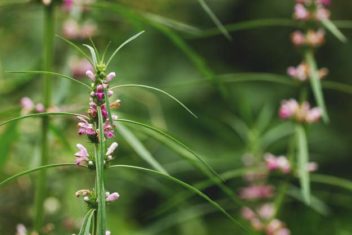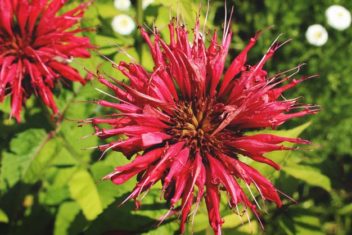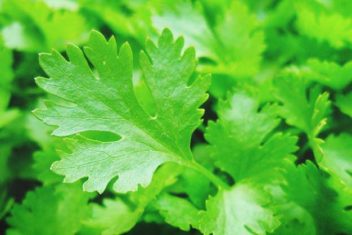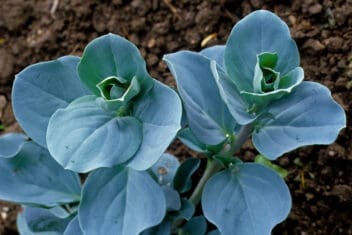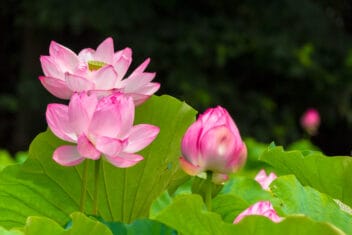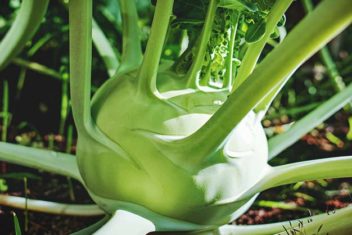Comfrey is one of those herbs that doesn’t get the attention it should. Growing comfrey doesn’t require any special tools or skills. Plus, it has medicinal properties, and it’s high in protein.
It’s a perennial that brings nutrients up from the depths of your soil for other plants to access, and it’s a nice addition to the compost pile. Comfrey is also a wholesome meal for livestock.
Ready to get started growing comfrey in
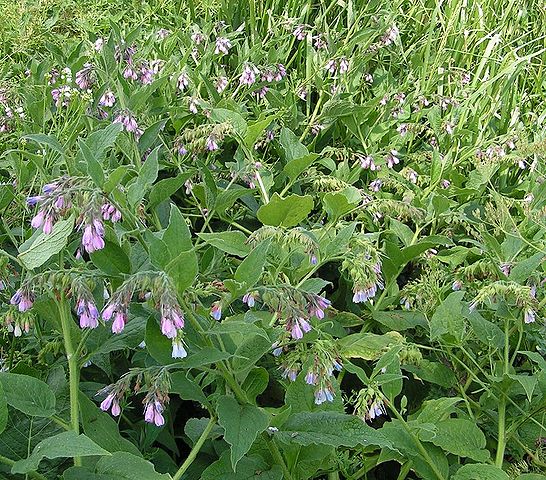
Common Comfrey Varieties
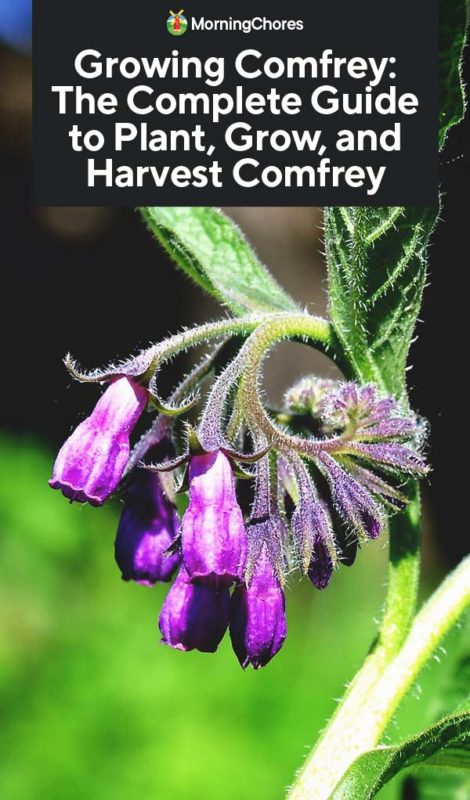
Comfrey is native to Europe, and it’s found all over Great Britain, where it grows wild along waterways and ditches. It probably made the leap to the Americas in the 1600s with European settlers. Now, you can find it all across the globe.
Comfrey has large taproots and dainty bell-shaped flowers that add a delicate bit of cheer to the garden. It’s especially impressive looking placed in the center of an herb bed.
Common Comfrey
Common comfrey (Symphytum o
Russian Comfrey
Russian Comfrey (Symphytum u
Blocking 14 and Blocking 4
There are two main cultivars of Symphytum uplandicum: Blocking 14 and Blocking 4, named for Blocking, England where they were developed.
Blocking 14 is sterile and does not produce seeds. The only way to propagate it is through divisions and root crowns. Trials have shown it has a high level of potash which makes it great as a mulch for tomatoes or a compost addition.
Blocking 4 has deep roots – up to ten feet long. These roots bring nutrients from the subsoil up into the plant, improving the surrounding soil. It’s ideal fodder for hogs and chickens.
Creeping Comfrey
Creeping comfrey (Symphytum grandiflorum) is a dwarf variety that is more useful as an ornamental. It does well in rock gardens and on slopes, but watch out. It can be invasive.
How to Plant Comfrey
Comfrey is cold hardy and grows in zones 3-9. In colder climates, it will die back in winter and then come up again in spring.
Comfrey grows well in full sun to part shade. It needs soil with a pH between 6.0-7.0 that is well-drained and rich in organic matter. That said, comfrey isn’t fussy.
Comfrey is a tall plant, and some varieties can reach five feet or more. Plants should be spaced two feet apart in each direction. It can be invasive, so be mindful when planting.
I don’t plant my comfrey all in one place. Instead, I put them around in various garden areas. I do this because it brings up nutrients from the soil, so they are available to other plants.
Being a perennial, you will want to give some thought to placement. I put comfrey plant in a garden corner to keep them contained.
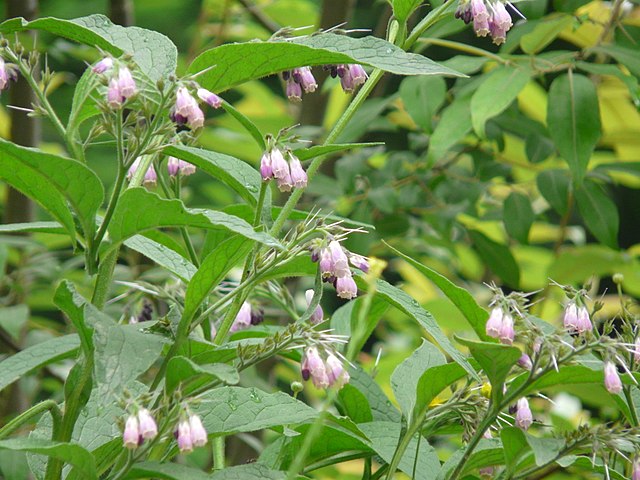
Starting From Seeds
Start comfrey from seeds indoors in late winter. Comfrey seeds need a chilling period.
Place them in a cool dark area such as an outdoor shed or refrigerator for a month before planting. They are slow to germinate, and if conditions are not to their liking, they may take a year to start growing.
Starting from Transplants or Cuttings
Your local nursery may carry comfrey in the herb section, and they are widely available at online retailers. Look for plants with good growth and deep green leaves. You can also take a cutting from a neighbor’s plant.
Comfrey grows best from bare-root crowns, which many online retailers carry. When you receive your crown, check to make sure that it feels firm. A mushy crown may have rotted and should be returned.
Start Crowns Indoors
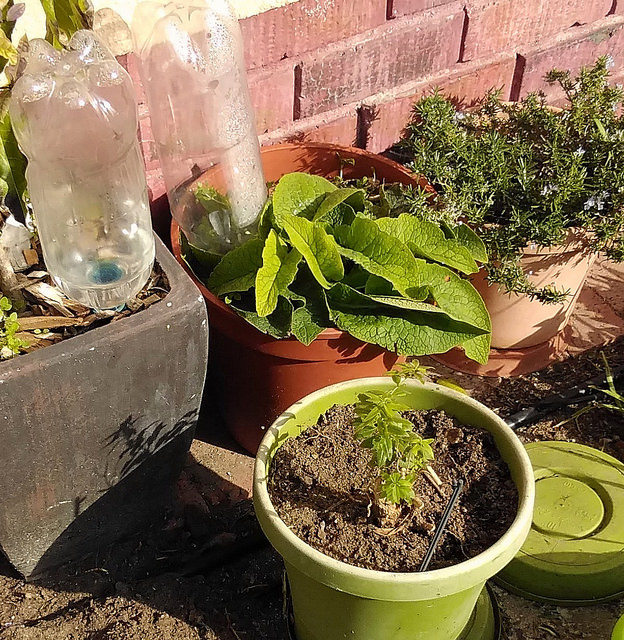
Crowns do best if you pot them first instead of planting directly in the garden. Put in a six-inch pot or a one-gallon container so the roots have plenty of room. Plant crowns three inches deep in light potting soil.
Place the pot in a cool room (50-60°F) in indirect sunlight. Keep moist but not wet. You can plant outdoors after the danger of frost has passed when they are showing leaves.
Plant transplants or cuttings 2-8 inches deep and crown cuttings 3-6 inches deep. Put plants deeper in sandy soil or where the weather is hot, and more shallow in places where the soil has clay or the weather is cold.
How to Care for Comfrey
Once you’ve got it growing, caring for comfrey isn’t too hard.
Watering
Once established, comfrey is drought tolerant because of its long roots. However, it will be happier if kept moist, particularly during dry spells. You don’t need to worry about fertilizing comfrey.
Dividing
Comfrey needs to be divided every couple of years. Doing so keeps the plant healthy and gives the roots plenty of space. Plant divisions in another location or share it with a friend.
Comfrey Problems and Solutions
Comfrey is a hardy plant with few diseases and pest issues. I did lose a comfrey plant to weeds once. It was my fault. I planted it in an area where I had planned to start another garden. But time and energy gave way and weeds took over.
Comfrey can also be susceptible to comfrey rust, which is a fungus that can reduce plant yield. It’s primarily a problem only in the U.K. The blocking 14 variety is resistant to rust.
Companions for Comfrey
Growing comfrey with other plants is smart because it brings minerals from the subsoil up to the topsoil. It gets tall and can crowd out its neighbors, so keep spacing in mind. This can also work to your advantage as it can provide shade for cool-loving greens.
Comfrey is particularly good with:
- Pear
- Plum
- Nectarine
- Apple
- Peach
- Apricot
- Persimmon
- Tomato
- Potato
- Cucumber
- Capsicum
Harvesting and Storing Comfrey
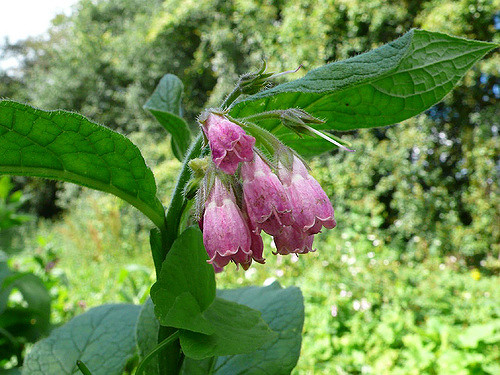
Comfrey produces bell-like flowers in late spring and early summer. They are high in nectar and popular with honey bees and other pollinators.
You can harvest comfrey from late spring through fall depending on how you use it. Harvest common comfrey plants when they’re about two feet tall and starting to flower if you’re going to use the leaves.
Comfrey for Compost
Comfrey makes an excellent compost plant. It’s high in minerals including potassium, silica, magnesium, calcium, nitrogen, and iron. These minerals enter your compost as the plant decomposes.
The leaves contain about 17% nitrogen. By comparison, horse manure contains about 14% while fresh and 2.3% composted. Leaves have high levels of p
To add comfrey to your compost, harvest the leaves and toss them in your green layer. Let the microorganisms break it down and mix in the nutrients.
Comfrey Tea for the Garden
Comfrey is excellent as a nutritious compost. Our guide will get you going on making and using comfrey tea.
Comfrey for Livestock
When I was growing up, it was common to feed comfrey to livestock because of its high mineral and protein content. Studies show that comfrey contains selenium which is often deficient in our fields and livestock. It also has lower levels of fiber, which makes it good for pigs and chickens.
Common wisdom says ruminants and milk animals increase lactation when they eat comfrey. My dairy goats and deer love comfrey and often invade the garden to get at it. I haven’t seen any negative effects, but it’s something they eat only occasionally, so use your best judgment.
Medicinal Qualities
Comfrey is nicknamed
It’s particularly useful for insect bites, including if your honey bees get mad at you. I was invaded by yellow jackets last year and stung twice. I made a comfrey poultice to draw out the toxins.
Traditionally, comfrey was used for internal ailments such as stomach aches. However, scientific studies have linked comfrey to liver toxicity and it shouldn’t be used internally. In 2001, the U.S. FDA banned products containing comfrey.
My Personal Comfrey Healing
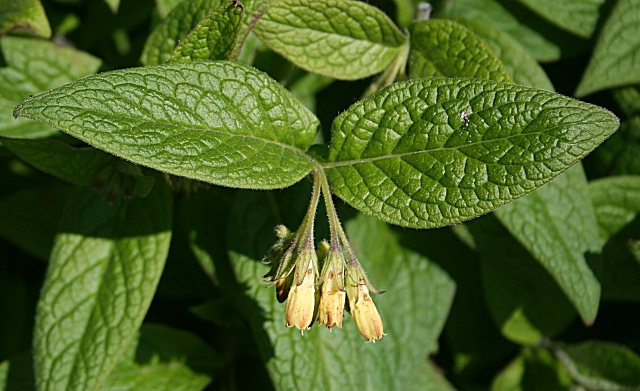
I don’t recommend avoiding going to a doctor if you need stitches. However, I once treated a bad cut with comfrey. I slipped in the mud and landed arm first on a glass cold frame. I received a nasty gash on my wrist that needed stitches.
My car wasn’t running, my infant son was napping and I had no money for the doctor. So I applied pressure with a towel to stop the bleeding and plucked several comfrey leaves.
I stuck them in a pot of water to boil, and after the leaves were supple, I placed them on my wrist and applied a bandage. I did this several times a day over several days and was careful to watch for infection.
It healed up nicely and to this day I have a slight scar that reminds me why I love the comfrey plant!

